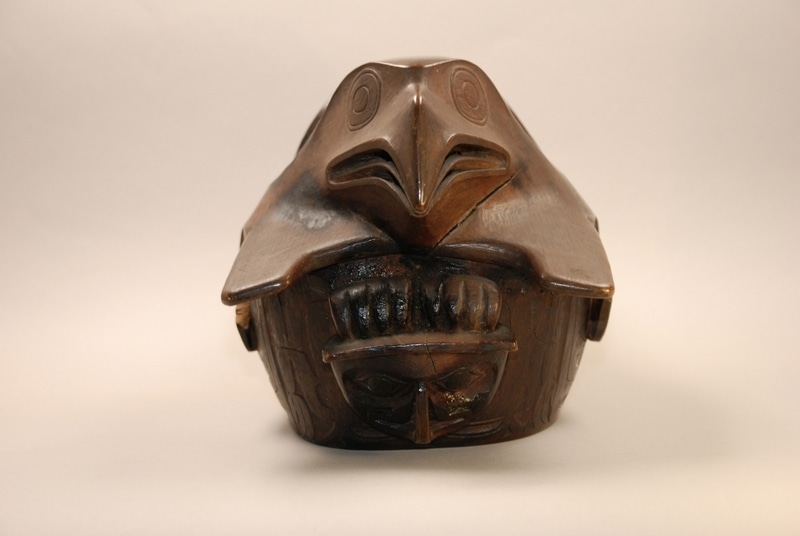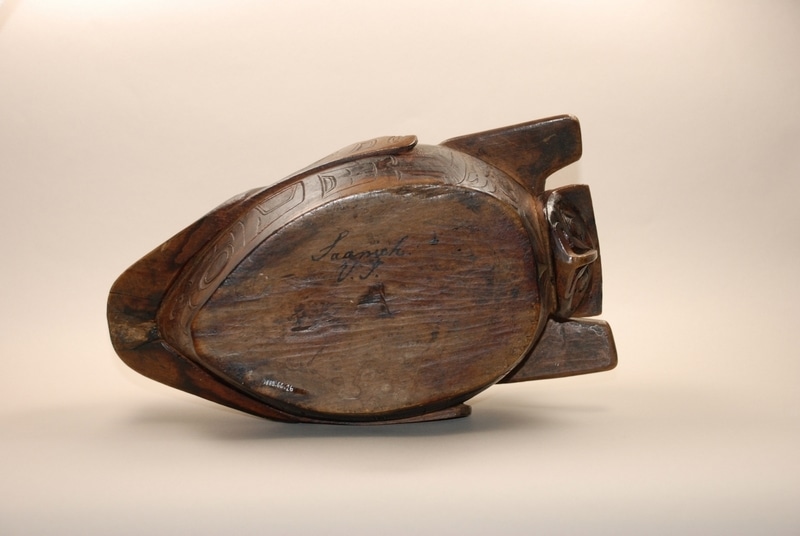Dish Item Number: 1885.66.26 from the MAA: University of Cambridge





Description
Large,deep dish carved with a whale or seal, an eagle and humanoid creature. The largest head is that of the whale/seal, and has large round eyes, and an open mouth. The creature' s fin jut from the side of the dish, and its tail projects from therear of the dish. Above the tail an eagle sits with an open beak and round eyes, it rests its feet on the head of a humanoid, beaked creature. This humanoid has its body represented in the two-dimensional carving decorating the lower part of the dish, together with a design which resembles the fins of a seal (G.Crowther). The fin on one side is damaged, there are also several cracks in the dish. The dish is still exuding grease.; Good
Context
A provenance of Saanich , Vancouver Island has been written on the base of the dish. The style of the dish is more Northern, but it is unusually heavy in design, and has rounded eye-sockets, suggesting it may originate elsewhere (G.Crowther).; Grease dishes often have more easily identifiable creatures, carved in the configurative style. I have distinguished them from bowls due to this ease of identification, but must also note that some bowls were also used for grease. It is possible the ease of identification reduced the exchange potential of the object. The grease dishes were used for oolichan and seal grease into which food was dipped during feasts and potlatches. Similar to spoons and bowls the use of objects decorated with crests demarcated potlatches and feasts as events removed from everyday existence.The crests carved on objects were possibly those of the owner representing a tangible connection between the lineage and the economic resources consumed during the feasting (G.Crowther).; Exhibited: CUMAA old Anthropological displays, Case 30, dismantled 19081986.; Collected by: Hepburn.J.E
Item History
- Made in British Columbia, Canada
- Received from J.E. Hepburn during 1885
Who
- Culture
- Northwest Coast
- Received from
- J.E. Hepburn
Where
- Holding Institution
- MAA: University of Cambridge
- Made in
- British Columbia, Canada
When
- Acquisition Date
- during 1885
Other
- Keyword
- Food Preparation; Ceremonial Objects; containers